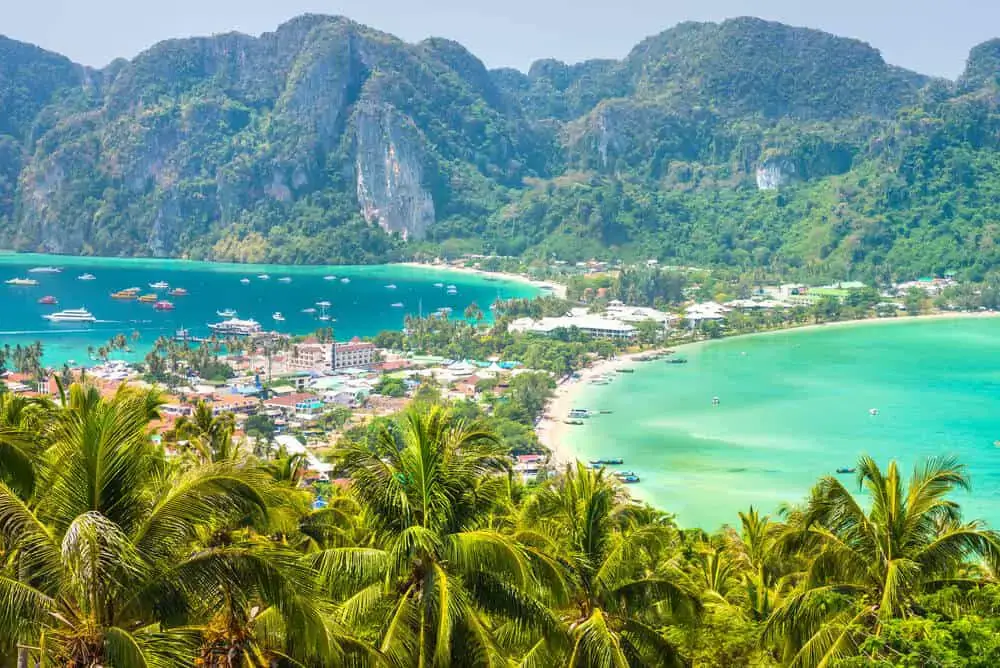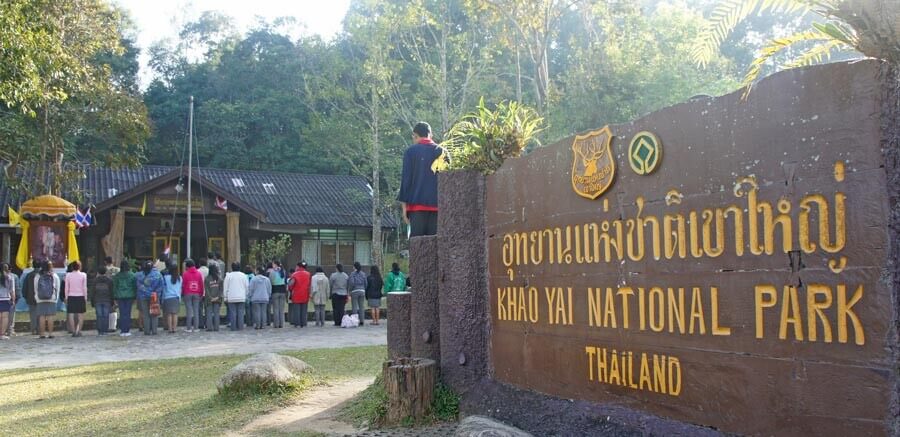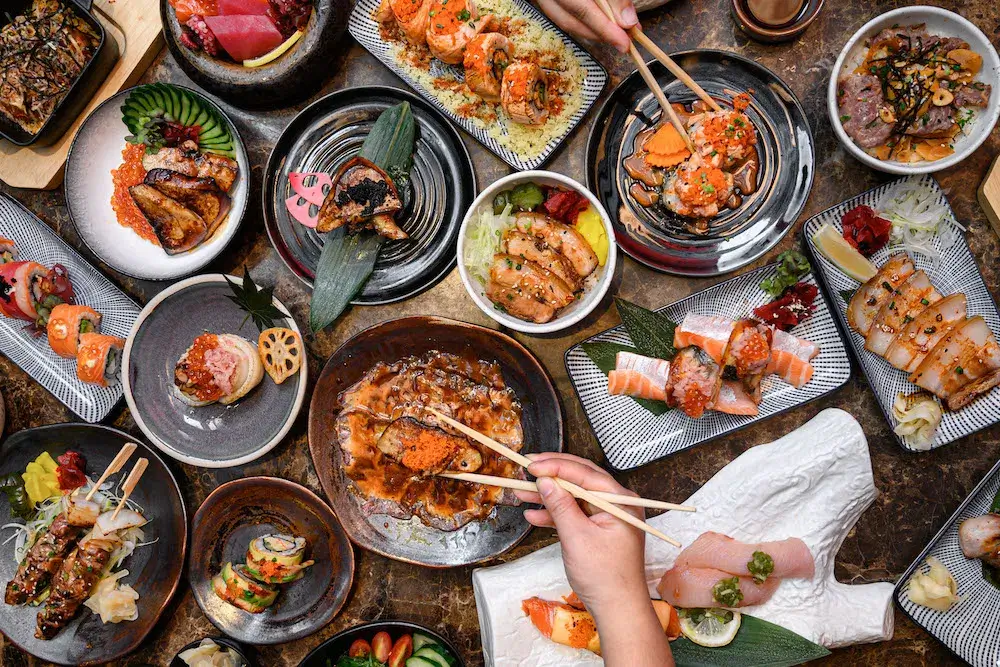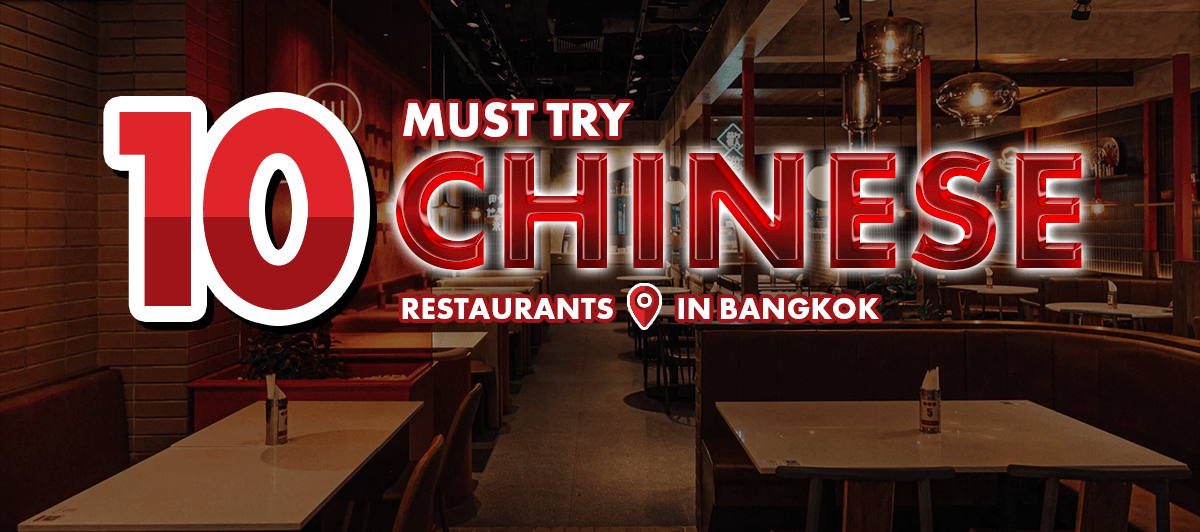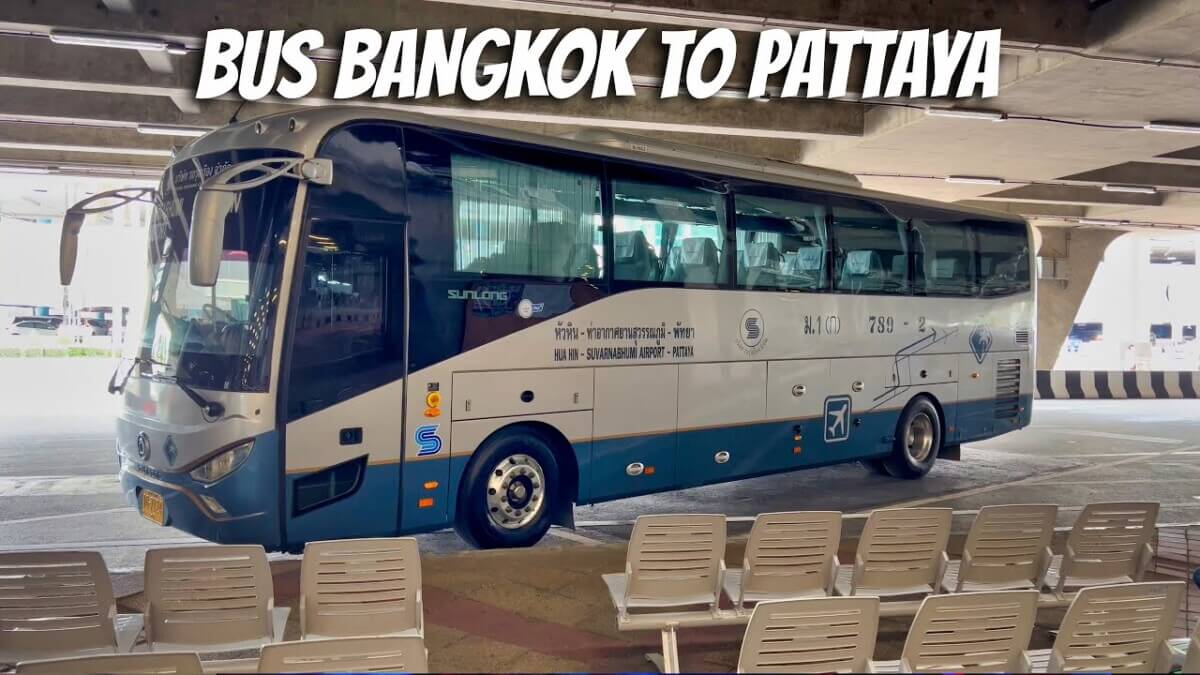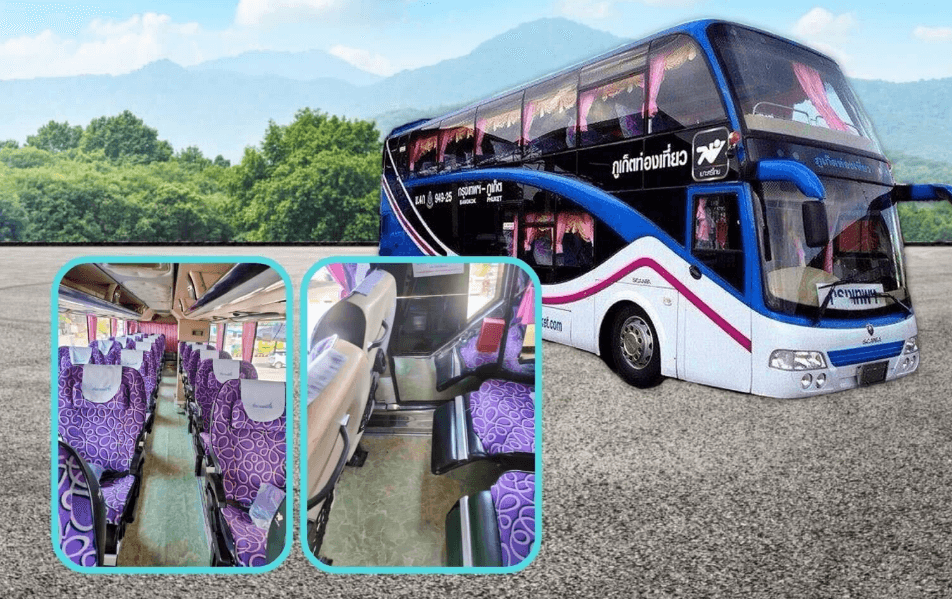As a Bangkok local who’s sipped fresh coconuts on Khao San Road since childhood, I welcome you to our vibrant neighborhood. Forget the backpacker clichés – the real magic happens when you explore like a resident. I used to watch grandmothers prepare secret-recipe curries while monks collect alms under century-old trees. This historic street pulses with authentic Thai life beyond the souvenir stalls. My guide reveals hidden food carts where artisans grill banana pancakes just like my school days, peaceful temples where saffron robes flutter in the breeze, and cultural treasures known only to regulars. Whether you’re craving crispy pork basil or hunting handwoven silks, I’ll help you experience Khao San Road’s true soul – where tradition and modernity create Bangkok’s most delicious harmony. Let’s explore responsibly and deliciously!
The Fascinating History of Khao San Road
Long before becoming a global backpacker hub, Khao San Road served as Bangkok’s major rice market. The name literally translates to “milled rice street,” dating back to its 19th-century origins when rice traders dominated the area. By the 1980s, budget travelers discovered its affordable guesthouses, transforming it into Southeast Asia’s backpacking headquarters. Today, while still retaining its adventurous spirit, Khao San Road has matured into a cultural melting pot where street food vendors, artisans, and families coexist.
The 200-meter stretch represents Thailand’s remarkable tourism evolution. Traditional shophouses now blend with contemporary cafes, while century-old banyan trees shade both locals playing chess and travelers sipping fresh coconuts. This seamless fusion creates Khao San Road’s unique energy – a place where history whispers from every alleyway while modern Bangkok pulses through its main artery.
- Origins: Established during King Rama V’s reign as part of Bangkok’s commercial district
- Transformation: Shifted from rice trading to tourism hub in the 1980s
- Cultural landmark: Featured in novels and films including “The Beach”
- Architectural blend: Traditional Thai shopfronts alongside modern businesses
How to Reach Khao San Road?
Navigating Bangkok’s transport network to Khao San Road is simpler than many travelers expect. While no direct BTS Skytrain or MRT subway stations serve the area, efficient connections bring you within walking distance. The most scenic approach involves taking the Chao Phraya Express Boat to Phra Arthit Pier (N13). From this riverside drop-off, a 10-minute stroll through historic neighborhoods reveals charming cafes and local markets before reaching Khao San Road.
For air-conditioned comfort, metered taxis remain reliable despite Bangkok’s notorious traffic. Use ride-hailing apps like Grab for fixed pricing. Alternatively, experience local life on Bangkok Bus routes 2, 15, or 47 which stop near Democracy Monument, just 5 minutes from Khao San Road’s entrance. Tuk-tuks offer the most thrilling arrival – negotiate fares beforehand and enjoy the wind in your hair as you zip through backstreets.
- River approach: Express boat to Phra Arthit Pier (orange flag line)
- Nearest transit: BTS Skytrain to National Stadium station + short taxi ride
- Bus connections: Routes 2, 15, 32, 44, 47, and 59 serve nearby areas
- Walking distance: 20 minutes from Grand Palace through local communities
Ideal Visiting Times for Khao San Road
Timing dramatically shapes your Khao San Road experience. For comfortable exploration and photos without crowds, arrive between 9-11 AM when vendors are setting up but temperatures remain manageable. This golden window offers unobstructed views of the street’s architecture and peaceful temple visits. By late afternoon, energy builds as food carts deploy their aromatic offerings and shopkeepers display colorful wares.
Weather significantly impacts enjoyment. November-February brings cooler temperatures (25-32°C) and clear skies – peak season requires patience but delivers vibrant atmosphere. March-May sees rising heat and humidity; hydrate frequently and seek air-conditioned cafes midday. Rainy season (June-October) transforms afternoons with dramatic downpours, but mornings often shine bright. Evenings year-round buzz with activity, though weekend nights draw biggest crowds.
- Cool season: November-February (ideal but busiest)
- Shoulder periods: March-May (hotter) and June-October (rainy but lush)
- Daily sweet spot: 9-11 AM for photography and relaxed exploration
- Festive peaks: Songkran (April) and New Year bring extraordinary energy
Khao San Road Street Food Guide
Beyond the fried scorpion novelty stalls, Khao San Road shelters authentic culinary treasures. Start your gastronomic adventure at Pad Thai stalls near Soi Rambuttri where smoky woks dance with rice noodles, tofu, and crunchy beansprouts. For legendary mango sticky rice, seek the blue-shirted vendor near Khao San Road entrance – his perfectly ripe mangoes and coconut cream create magic. Don’t miss grilled banana pancakes drizzled with condensed milk, a Thai street dessert perfected over generations.
Venture into adjacent lanes for deeper food discoveries. Tewes Restaurant’s century-old recipes deliver fiery tom yum soup that locals queue for. Nearby, Muslim-run curry stalls offer halal chicken massaman fragrant with cinnamon and star anise. Early risers find steaming bowls of jok (rice porridge) with ginger and pork meatballs – a beloved Thai breakfast. Remember to try sai oua (herbal sausage) from northern Thailand vendors, bursting with lemongrass and kaffir lime flavors.
- Must-try dishes: Pad Thai, mango sticky rice, grilled satay, coconut ice cream
- Hidden gems: Soi Rambuttri’s boat noodles, Tewes Restaurant’s tom yum
- Vegetarian options: Fried morning glory, mushroom laab, banana blossom salads
- Food safety: Choose stalls with high turnover, bottled water, and peeled fruits
Shopping Experiences on Khao San Road
Khao San Road transforms into a shopper’s paradise after sunset when sidewalks bloom with colorful stalls. Beyond typical tourist souvenirs, discover handmade treasures like woven bamboo lanterns from Chiang Mai, organic indigo-dyed fabrics, and delicate saa paper journals. Bargaining remains part of the culture – politely counter with 30% less than initial asking prices and smile. For higher-quality crafts, visit fixed-price shops like Colors of Thailand featuring fair-trade goods from artisan cooperatives.
Textile lovers find silk paradise at family-run shops along Tanao Road. These multigenerational businesses offer everything from ready-made elephant pants to custom-tailored traditional shirts. Nearby, amulet markets fascinate with miniature Buddha images collected by Thai devotees. Don’t overlook Khao San Road’s literary offerings – used book exchanges stock travel guides and novels in dozens of languages, perfect for your next journey.
- Unique finds: Hand-painted umbrellas, hill tribe embroidery, recycled material accessories
- Bargaining etiquette: Negotiate politely, avoid touching items unnecessarily
- Fixed-price gems: Doi Tung craft collective, Elephant Parade store
- Local markets: Banglamphu Fresh Market for non-touristy shopping
Cultural Experiences Around Khao San
Khao San Road serves as gateway to Bangkok’s historic treasures. Wat Chana Songkhram temple, just steps from the main strip, offers serene morning monk chats where visitors learn Buddhist principles. Every evening, free traditional dance performances unfold at the Phra Sumen Fort stage – arrive early for front-row mats. For hands-on culture, join a short Thai cooking class in nearby alleys where grandmothers teach family recipes using market-fresh ingredients.
Art thrives in hidden galleries like the Bangkok Art & Culture Centre satellite space on Tanao Road. On Sundays, wander to Phra Athit Road for the Artist’s House where local painters demonstrate traditional techniques. Spiritual seekers appreciate early morning alms-giving ceremonies to saffron-robed monks – vendors sell prepared rice offerings near guesthouse entrances. These authentic experiences reveal Khao San Road’s cultural depth beyond its commercial surface.
- Temple visits: Wat Bowonniwet (royal temple) and Wat Chana Songkhram
- Free performances: Daily Thai dance at Phra Sumen Fort (6:30 PM)
- Workshops: Fruit carving, Thai massage, and floral garland making
- Community projects: Bangkok Noi Canal cleanup volunteering
Nearby Attractions Worth Exploring
Khao San Road’s central location places Bangkok’s crown jewels within walking distance. The Grand Palace and Wat Phra Kaew (Temple of the Emerald Buddha) shine just 20 minutes south – arrive at opening time to avoid crowds and heat. Cross the river to Wat Arun, whose porcelain-encrusted spire dazzles at sunset. For green respite, Santichaiprakan Park offers shaded benches beside ancient city walls with panoramic river views.
Museum lovers discover Loha Prasat’s unique metal-spired temple architecture and the Bangkokian Museum’s preserved colonial home. Book lovers browse through Dasa Book Cafe’s curated collection, while photographers find endless inspiration along Phra Athit Road’s century-old shophouses. These nearby attractions let you extend exploration beyond Khao San Road while understanding its historical context within Bangkok’s old city.
- Iconic landmarks: Grand Palace (1.2km), Wat Pho reclining Buddha (1km)
- River experiences: Bangkok Noi Canal boat tours, sunset at Wat Arun
- Museums: National Gallery (1.5km), Museum Siam (2km)
- Parks: Saranrom Royal Garden, Rama VIII Bridge Park
Essential Travel Tips for Visitors
Maximizing your Khao San Road experience requires smart preparation. Wear comfortable walking shoes as uneven sidewalks challenge flip-flops. Carry small bills – street vendors rarely change 1000THD notes. Download offline maps since side alleys form confusing mazes. For temple visits, pack lightweight long pants and shoulder coverings. Most importantly, embrace “jai yen yen” (cool heart) mentality when navigating crowds – patience unlocks Thai hospitality.
Connectivity proves excellent throughout the area. Purchase local SIM cards at 7-Eleven stores for affordable data. Free public WiFi hotspots operate near Phra Sumen Fort and police stations. While English is widely spoken, learning basic Thai phrases like “kob khun krap/ka” (thank you) delights locals. Carry reusable water bottles to refill at filtered stations – reducing plastic aligns with Thailand’s environmental efforts. These small considerations transform a tourist experience into meaningful travel.
- Footwear: Sturdy sandals for uneven surfaces and temple visits
- Money matters: Exchange rates better at SuperRich than airport
- Local etiquette: Remove shoes before entering shops/homes, don’t touch heads
- Hydration: Refill bottles at water stations (look for blue signs)
Safety Considerations on Khao San Road
Khao San Road remains generally safe, but standard travel precautions apply. Petty theft occasionally occurs in dense crowds – wear backpacks front-facing and avoid back pockets. Traffic poses the real danger; wait for locals before crossing streets as vehicles rarely yield. At night, stick to well-lit main streets rather than dark alleys. Beware of “gem scam” touts near tourist attractions – official shops don’t approach strangers on streets.
Food safety standards are generally high, but watch for vendors reheating pre-cooked items repeatedly in the sun. Choose stalls with ingredient covers and visible cooking. During rainy season, beware of slippery tiles and sudden flooding. Police boxes stationed throughout the area provide assistance – their bright yellow signs read “Tourist Police.” Register your itinerary with your embassy and save emergency numbers: Tourist Police 1155, Medical 1669. These simple precautions ensure worry-free exploration.
- Common risks: Pickpocketing in crowds, reckless drivers, heat exhaustion
- Scam avoidance: Ignore “attraction closed” touts, overfriendly guides
- Health precautions: Apply mosquito repellent at dusk, watch for dehydration
- Emergency contacts: Tourist Police 1155 (English-speaking)
Respectful Cultural Practices
Thais deeply appreciate visitors respecting their customs. When visiting temples, cover shoulders and knees – many loan wraps at entrances. Never point feet toward Buddha images or people – sit cross-legged or kneel instead. Public displays of affection make locals uncomfortable, even between married couples. When handing money to vendors, place it gently rather than tossing – small gestures show cultural awareness.
Photography requires special consideration. Always ask permission before photographing people, especially monks. Avoid touching ceremonial items or food displays for pictures. During national anthem (8AM/6PM), pause respectfully – you’ll notice Thais stopping mid-step. These mindful practices honor Thailand’s gracious culture while enriching your travel experience through meaningful connections with locals.
- Temple protocol: Remove shoes, speak softly, never turn back to Buddha images
- Monk interactions: Women avoid physical contact including handing objects directly
- Royal family: Never criticize the monarchy – shows extreme disrespect
- Head importance: Avoid touching anyone’s head, including children
Khao San Road offers more than just a tourist checklist – it’s a living tapestry of Thai culture where ancient traditions blend with contemporary energy. By exploring beyond the main strip, respecting local customs, and embracing spontaneous discoveries, you’ll uncover the authentic Bangkok that residents cherish. Let the aroma of sizzling woks guide you, the rhythm of temple bells center you, and the legendary Thai hospitality welcome you. As Bangkok continues evolving, Khao San Road remains its beating heart – a place where every visitor leaves with unique stories and flavors that linger long after departure. May your journey here create memories as vibrant as the street itself.


